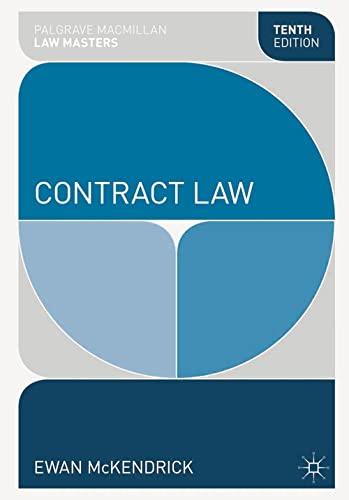Question
Case Scenario: Ontario Aggregates extracts stone from its quarries. The work includes drilling, using explosives to break up rock, loading rock and hauling it to
Case Scenario: Ontario Aggregates extracts stone from its quarries. The work includes drilling, using explosives to break up rock, loading rock and hauling it to a processing plant where it is screened, and washed. Franks and Smith are loader operators employed by the company. The company had been having problems with its blasting operations so that the digging and loading of rock had been difficult. Franks and Smith were assigned to work in quarry #1, where they were supposed to load rock into trucks. Because of the problems with the blasting process this work was very difficult. Smith operated a front-end loader, and in the course of attempting to load the trucks he was extensively bumped and jarred. Franks operated a larger bulldozer attempting to assist Smith. Frank's work was easier because it did not involve the continuous heavy jarring of the operator. Eventually, after four hours of work Franks and Smith got to the point where they did not think they could accomplish any more work safely, and they were concerned with the possibility of unexploded charges in the pile of rock. The employer agreed with their assessment of the situation and their refusal to carry on any further. The supervisor directed Franks and Smith to do work in quarry # 2. This was a fresh blast area where the employer said the loading should be easier. Franks and Smith both refused this work. Smith stated he had been extensively jarred, was tired, and did not think he could work safely. The supervisor held a short meeting with Franks and Smith. The supervisor advised that another employee had worked in the area in question on the previous shift without incidentand encouraged them to look at the work area that was suggested. Both Franks and Smith refused to examine the area, and they were both sent home. The next day, Franks and Smith were both suspended three days for insubordination.
Questions: a) In accordance with section 43 of the Occupational Health and Safety Act (OHSA), do you feel that Franks had reasonable grounds to believe he could not work safely? b) In accordance with section 43 of the Occupational Health and Safety Act (OHSA), do you feel that Smith had reasonable grounds to believe he could not work safely? c) On what basis could Franks and Smith attempt to challenge their suspension? d) What outcome do you expect for Franks and Smith? You can state different outcomes
Step by Step Solution
There are 3 Steps involved in it
Step: 1

Get Instant Access to Expert-Tailored Solutions
See step-by-step solutions with expert insights and AI powered tools for academic success
Step: 2

Step: 3

Ace Your Homework with AI
Get the answers you need in no time with our AI-driven, step-by-step assistance
Get Started


